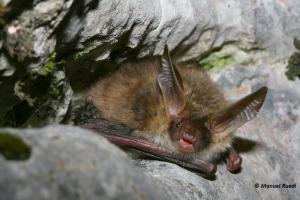The Bat Agreement

The Agreement on the Conservation of Populations of European Bats came into force in 1994 and until now a total of 38 out of 63 range states have acceded to the Agreement.
The Agreement was set up under the Convention on the Conservation of Migratory Species of Wild Animals, which recognises that endangered migratory species can be properly protected only if activities are carried out over the entire migratory range of the species.
The Bat Agreement aims to protect all 55 European bat species through legislation, education, conservation measures and international co-operation with Agreement members and with those who have not yet joined. The Agreement provides a framework of co-operation for the conservation of bats throughout Europe, Northern Africa and the Middle East.
In 1995, the First Session of the Meeting of Parties to the Agreement formed an Action Plan, which was to be translated into international action. They established an Advisory Committee to carry forward this Plan between the Meetings of Parties.
The most significant items for the Advisory Committee are monitoring and international activities. A pan-European observation study identifies population trends and facilitates the timely introduction of measures to address any problems which the study's results throw up. The study is based upon representative species, and consistent methods for observing them are used.
International-protection measures for bats are most important for those species which migrate the furthest across Europe. Possible dangers caused by bottle-neck situations in the migratory routes of various species are identified and addressed. The Advisory Committee also examines the available data about the migratory behaviour of representative bat species.
About the EUROBATS Secretariat

The EUROBATS Secretariat was established by the First Session of the Meeting of Parties in 1995. It started working in Bonn, Germany in 1996 and is co-located with the Secretariat of the Bonn Convention and other environment and development-related United Nations institutions at the UN Campus in Bonn.
Its particular functions are to:
-
exchange information and co-ordinate international research and monitoring initiatives;
-
arrange the Meetings of the Parties and the Advisory and Standing Committee meetings;
-
stimulate proposals for improving the effectiveness of the Agreement, and attract more countries to participate in and join the Agreement;
-
stimulate public awareness of the threats to European bat species and what can be done at all levels to prevent their numbers dwindling further.
You can read more interesting facts about bats and the Agreement in the blue EUROBATS leaflet, which is available online and as a hard copy from the Secretariat.